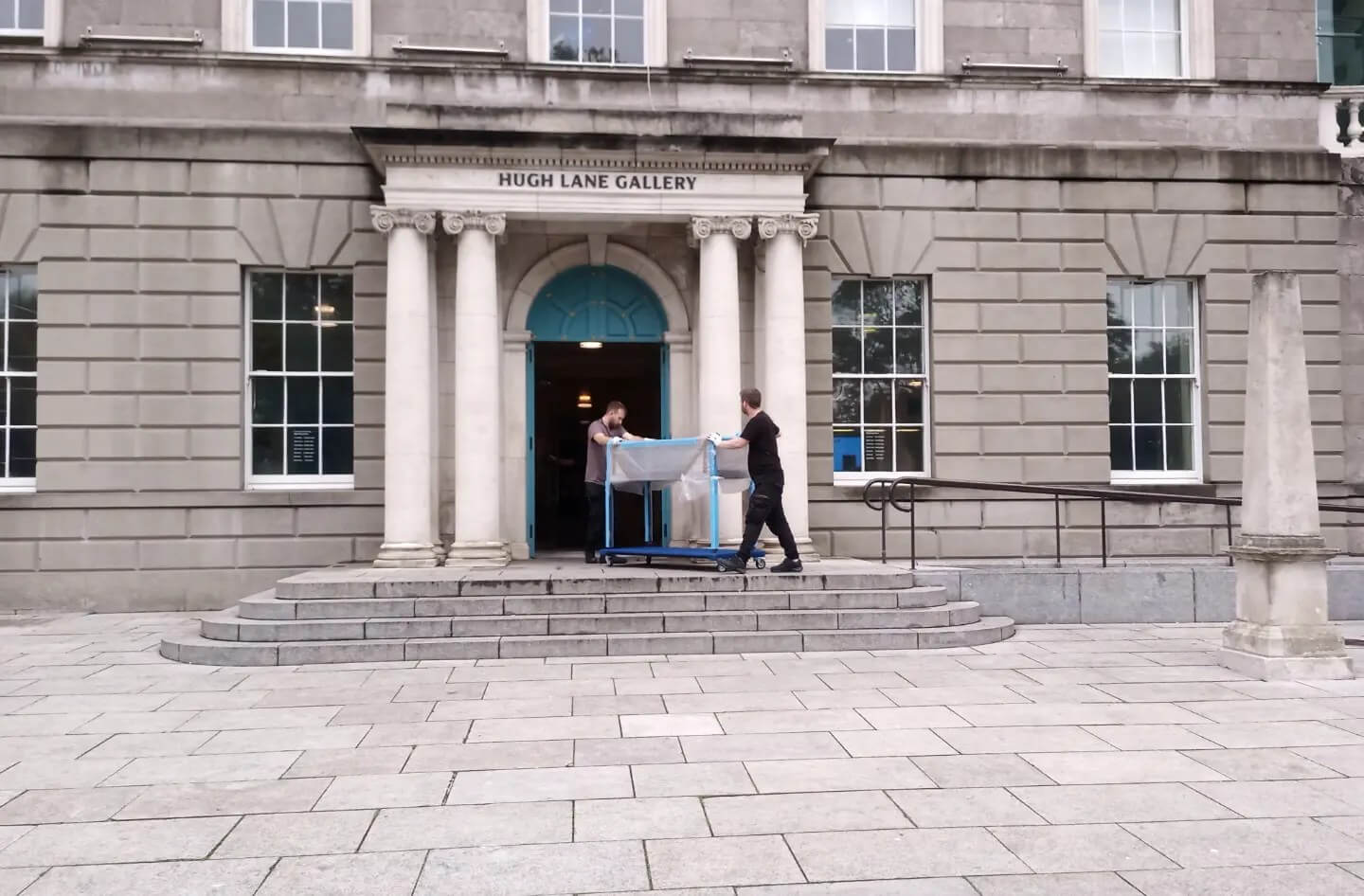
The first major step was to find the ideal location for the case within the OPW’s Dublin sites. The choice was narrowed to two iconic venues: the Royal Hospital Kilmainham (RHK) and the Printworks at Dublin Castle.
Enter some clever geometry. Collaborating closely with our expert engineering partners, Archa Inženiring, we devised an ingenious solution using angled display techniques grounded in the principles of Pythagoras’ theorem. This allowed us not only to fully exhibit the panorama but to securely support it in a way that preserved its integrity.

With the design complete fabrication could start, and the pieces started to come together to make the plans into a reality. Fabrication of the case was undertaken at Archa Inženiring’s state-of-the-art facility, and the components were then shipped to Dublin via Newbliss for assembly. Over a meticulous four-day installation, the Darac and Archa teams worked together to transform a previously unused space of the Printworks into an exhibition area on view as soon as you enter The Printworks building.

To address the ceiling height challenge, a set of custom-designed sliding inserts was developed in six perforated sections. These inserts glide smoothly along discreetly integrated rails within the structure of the case, allowing the large panorama to be displayed at an angle that fits the room’s proportions. The perforations serve multiple purposes — they enable the artwork to be safely secured from the reverse, allow for visual inspection while on display, and promote airflow behind the piece to support passive humidity control. The inserts can also be easily removed and stored, offering flexibility for future use of the case.
Initially, the case will display the remarkable Panorama of Constantinople by Niccolo Guidalotto de Mondavia, 1662. This was created in pen and ink on paper in the Franciscan’s attempt to stir Pope Alexander VII against the Ottoman Empire, a grandiose work designed to impress and inspire a crusade to reclaim Constantinople. Although ultimately it did not achieve it’s aim, Pope Alexander’s lack of interest worked to our favour as he simply stored it, rolled, in the basement of the Chigi Palace in Rome ensuring that there was little fading of the ink. To continue this preservation, we had to design a lighting system that would continue to delay the degradation of the ink.
The case features 51 individual LED lights, carefully calibrated to emit a combined lighting level of less than 50 lux—ensuring the delicate artwork remains protected from light damage. Each LED is strategically positioned to provide even, consistent illumination across the entire panorama, allowing it to be clearly viewed without compromising its preservation.
Thanks to its adaptable design, the case is future-proofed to accommodate other exhibitions at Dublin Castle, making it a versatile asset for the OPW.
This project showcases Darac’s commitment to innovative, bespoke display solutions — marrying historical respect with modern engineering to protect and present Ireland’s cultural treasures.

